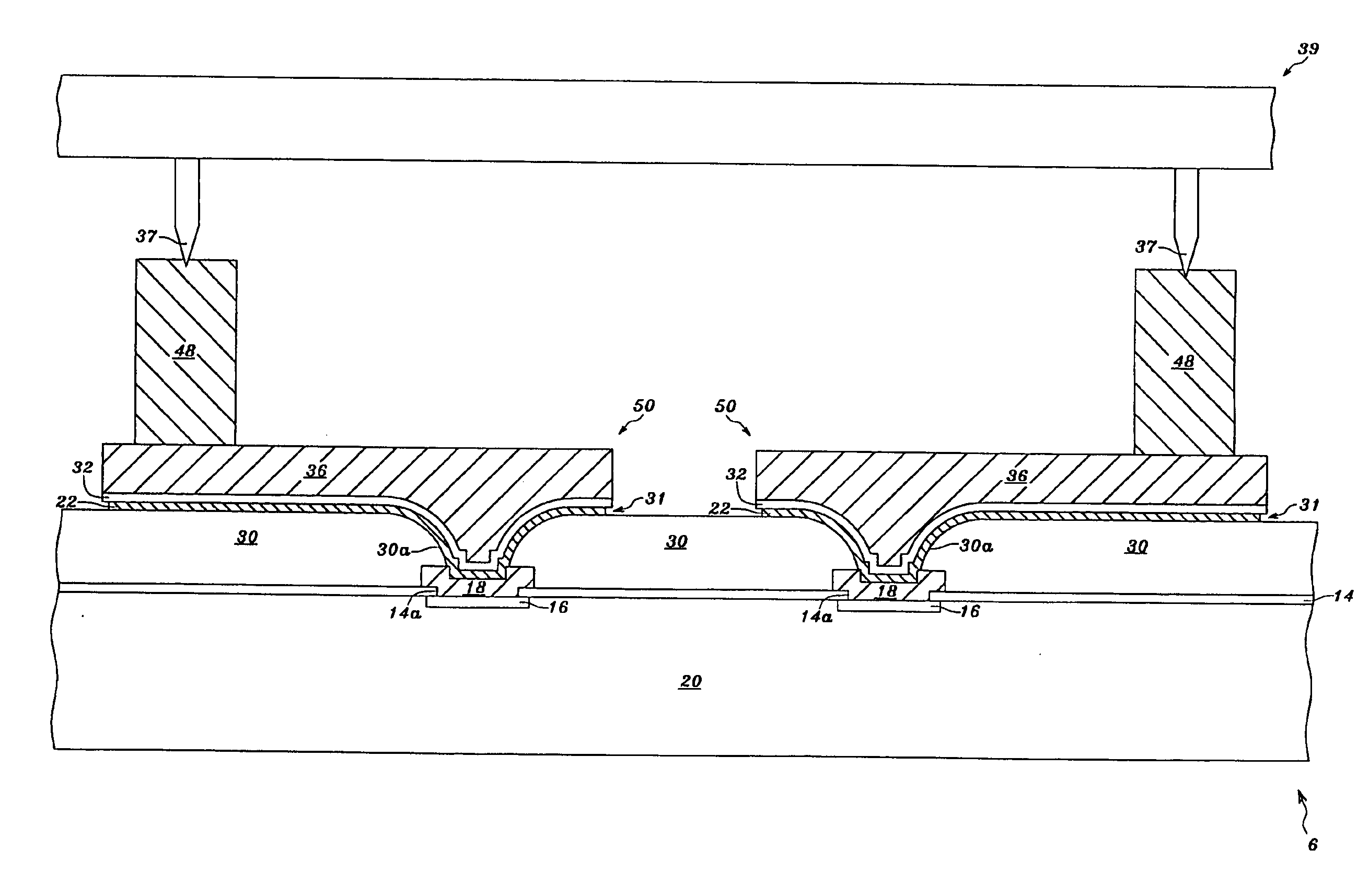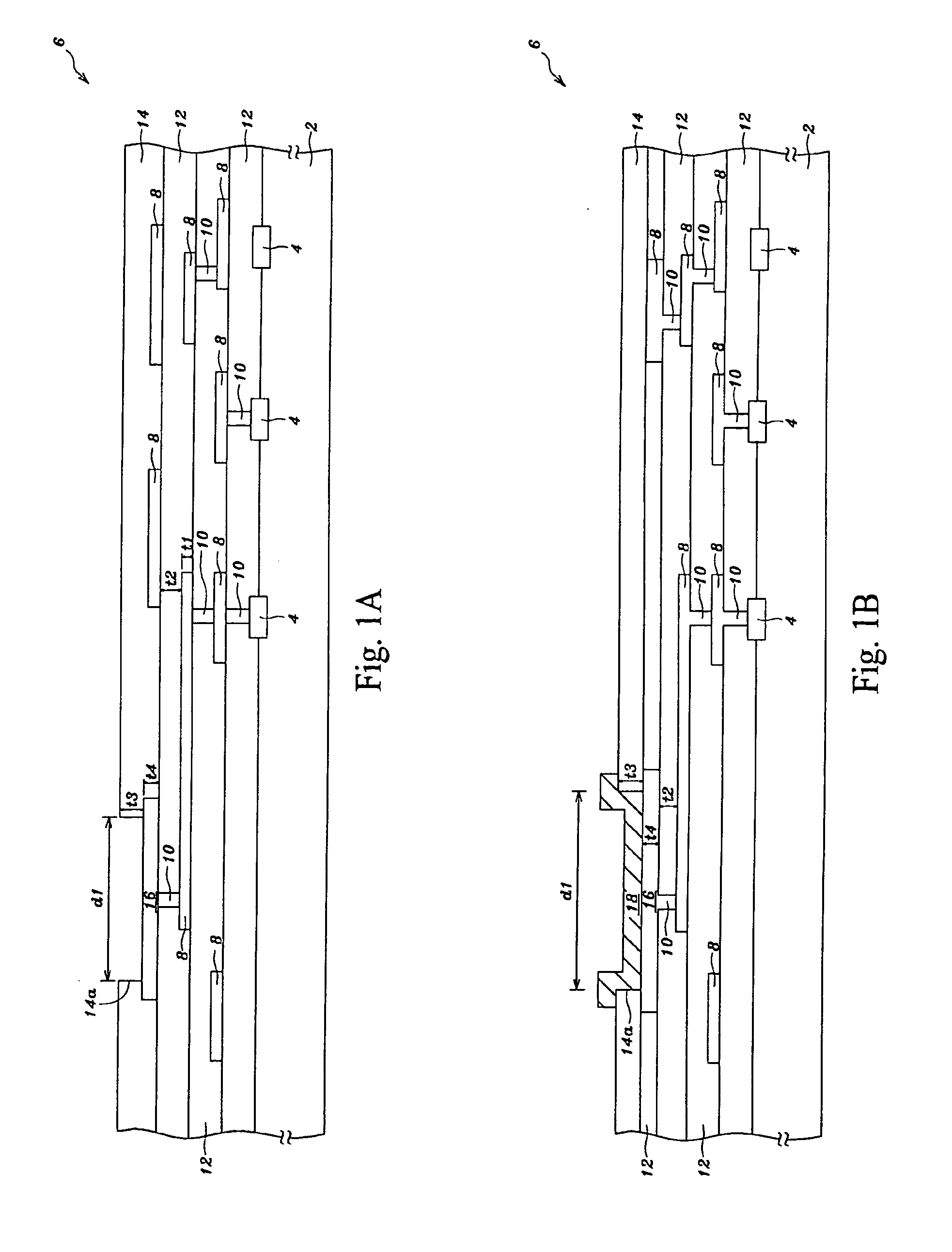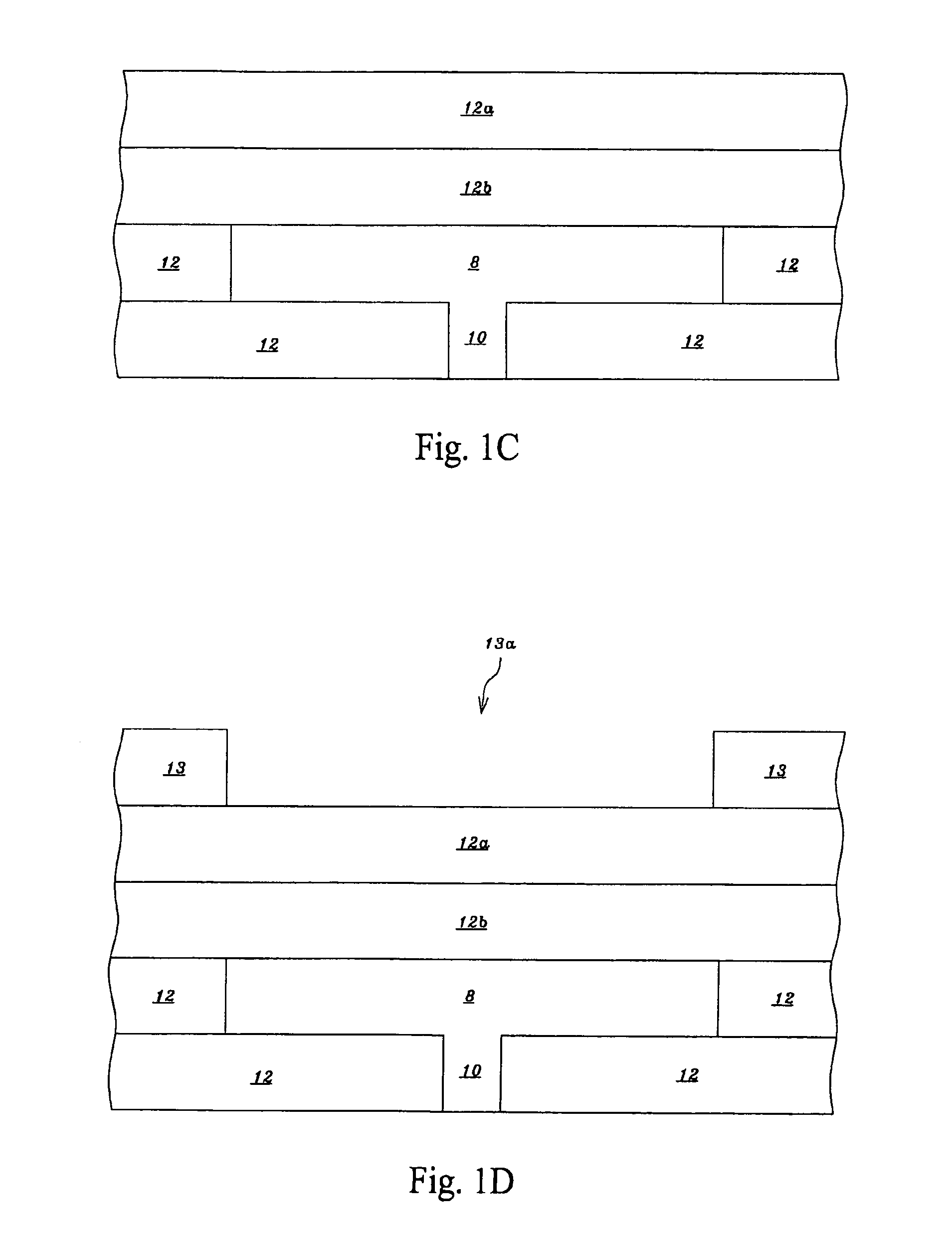Method for forming post passivation Au layer with clean surface
- Summary
- Abstract
- Description
- Claims
- Application Information
AI Technical Summary
Benefits of technology
Problems solved by technology
Method used
Image
Examples
embodiment 1
[0049]Referring to FIG. 2A, a titanium-tungsten-alloy layer 22 having a thickness of between 0.03 and 0.7 μm, and preferably of between 0.03 and 0.35 μm, can be formed on the passivation layer 14 and on the pads 16 exposed, respectively, by the openings 14a. Only one of the pads 16 and only one of the openings 14a are shown. For example, the titanium-tungsten-alloy layer 22 having a thickness of between 0.02 and 0.5 μm can be sputtered on the passivation layer 14 and on the pads 16, principally made of aluminum, exposed, respectively, by the openings 14a. Alternatively, the titanium-tungsten-alloy layer 22 having a thickness of between 0.02 and 0.5 μm can be sputtered on the passivation layer 14 and on the pads 16, principally made of copper, exposed, respectively, by the openings 14a. The titanium-tungsten-alloy layer 22 is treated as an adhesion / barrier layer to prevent the occurrence of interdiffusion between metal layers and to provide good adhesion between the metal layers.
[005...
embodiment 2
[0084]Referring to FIG. 3A, after the step shown in FIG. 2B, a photoresist layer 26, such as positive-type photoresist layer, having a thickness of between 10 and 35 micrometers is spin-on coated on the seed layer 24. Referring to FIG. 3B, the photoresist layer 26 is patterned with the processes of exposure and development to form multiple openings 26a in the photoresist layer 26 exposing the seed layer 24. A 1× stepper or 1× contact aligner can be used to expose the photoresist layer 26 during the process of exposure.
[0085]For example, the photoresist layer 26 can be formed by spin-on coating a positive-type photosensitive polymer layer having a thickness of between 10 and 35 μm on the seed layer 24, then exposing the photosensitive polymer layer using a 1× stepper or 1× contact aligner with at least two of G-line having a wavelength ranging from 434 to 438 nm, H-line having a wavelength ranging from 403 to 407 nm, and I-line having a wavelength ranging from 363 to 367 nm, illumina...
embodiment 3
[0111]In the present invention, multiple metal traces can be formed over the passivation layer 14. The process of forming the metal traces and testing the semiconductor wafer 6 will be illustrated in FIGS. 4A-4V.
[0112]One of the metal traces can be a redistributed metal trace to redistribute input or output positions. The redistributed metal trace is over the passivation layer 14 and on a first metal pad connected to the metallization structure, wherein the first metal pad may be a copper pad exposed by the opening 14a in the passivation layer 14, an aluminum pad exposed by the opening 14a in the passivation layer 14 or a metal cap 18 on a copper pad exposed by the opening 14a in the passivation layer 14. The redistributed metal trace comprises a second metal pad over the passivation layer 14, and the position of the second metal pad from a top perspective view is different from that of the first metal pad, to which the redistributed metal trace is connected. In a chip probing (CP) ...
PUM
 Login to View More
Login to View More Abstract
Description
Claims
Application Information
 Login to View More
Login to View More - R&D
- Intellectual Property
- Life Sciences
- Materials
- Tech Scout
- Unparalleled Data Quality
- Higher Quality Content
- 60% Fewer Hallucinations
Browse by: Latest US Patents, China's latest patents, Technical Efficacy Thesaurus, Application Domain, Technology Topic, Popular Technical Reports.
© 2025 PatSnap. All rights reserved.Legal|Privacy policy|Modern Slavery Act Transparency Statement|Sitemap|About US| Contact US: help@patsnap.com



